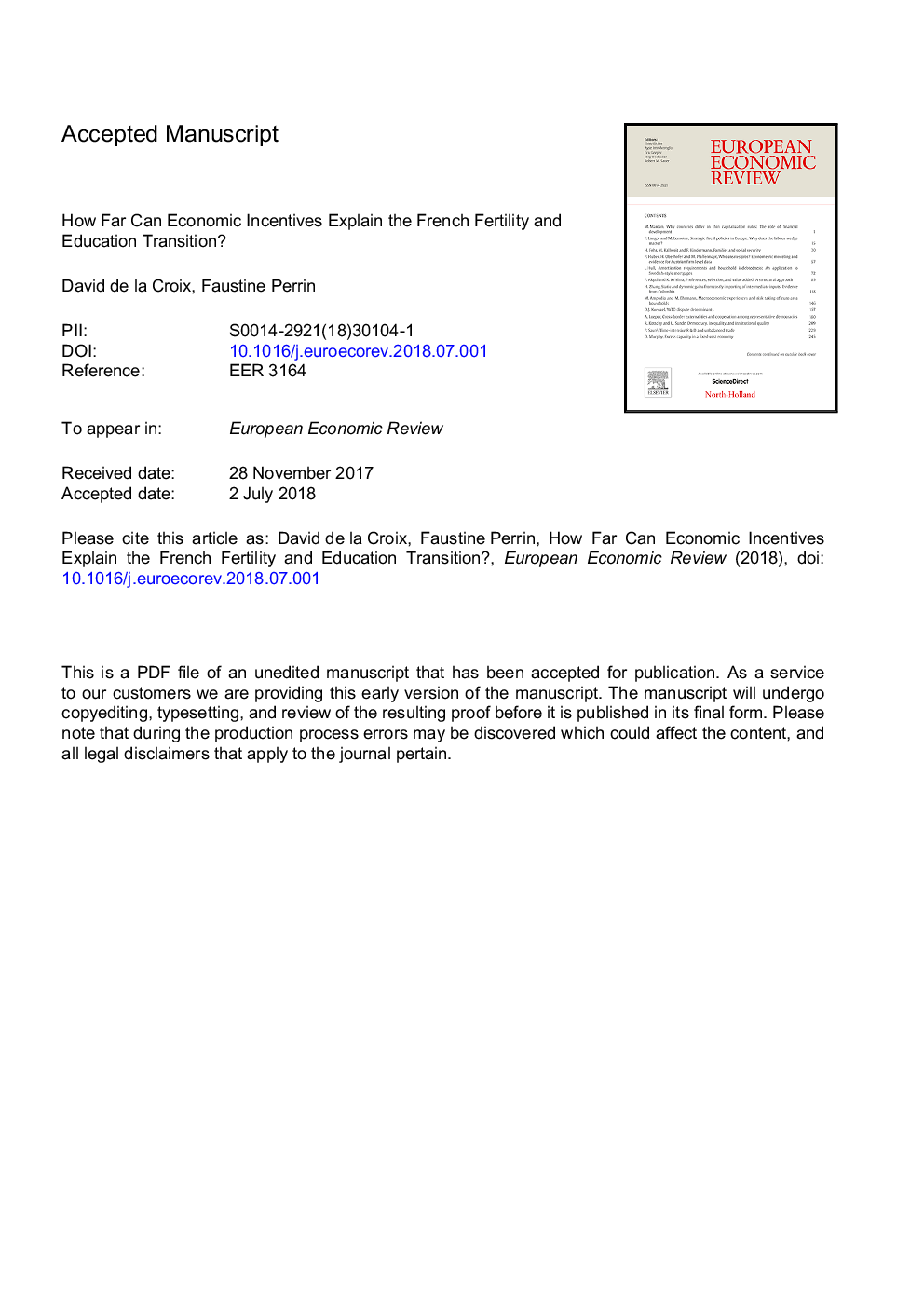| Article ID | Journal | Published Year | Pages | File Type |
|---|---|---|---|---|
| 7351349 | European Economic Review | 2018 | 46 Pages |
Abstract
We analyze how much a core rational-choice model can explain the temporal and spatial variation in fertility and school enrollment in France during the 19th century. The originality of our approach is in our reliance on the structural estimation of a system of first-order conditions to identify the deep parameters. Another new dimension is our use of gendered education data, allowing us to have a richer theory having implications for the gender wage and education gaps. Results indicate that the parsimonious rational-choice model explains 38 percent of the variation of fertility over time and across counties, as well as 71 percent and 83 percent of school enrollment of boys and girls, respectively. The analysis of the residuals (unexplained by the economic model) indicates that additional insights might be gained by interacting incentives with cross-county differences in family structure and cultural barriers.
Related Topics
Social Sciences and Humanities
Economics, Econometrics and Finance
Economics and Econometrics
Authors
David de la Croix, Faustine Perrin,
